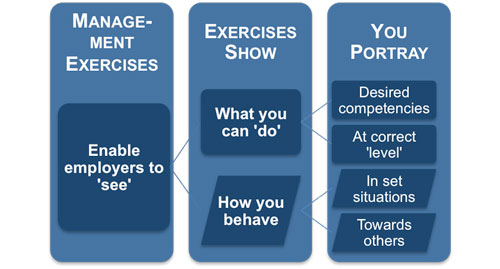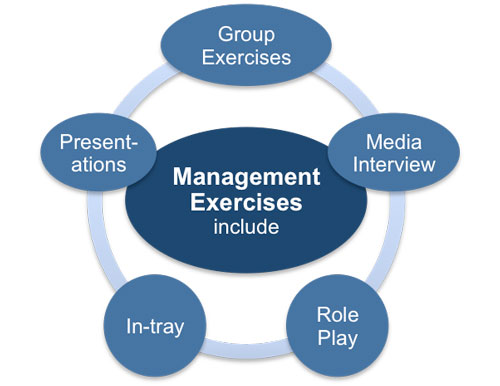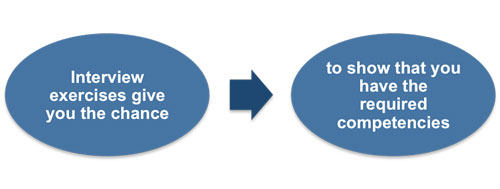Preparing for Interview Exercises
Many organizations incorporate practical exercises into their management assessment process. These enable potential employers to see how you behave when you are asked to perform some of the tasks required by the role in various situations. They are designed to show:
• How you approach a scenario
• How you react to problems
• How you relate to others
 |
Whether you are seeking a position in a commercial, nonprofit, or educational organization the successful candidate will be able to show:
• The desired role competencies
• At the level appropriate to the role
• In their actions and words
Your success in these exercises will depend on your ability to display the 'right' behaviors and use language that reflects the ethos of the organization.
The development of your competencies is a continuous process and taking the time to regularly check how they compare to your desired role is paramount if you want to succeed. This comparison of how well your current competencies match those required in the role should be an essential part of your preparation for an interview or internal promotion.
It is important to keep your mind focused on the fact that each exercise you perform is designed to determine how well you demonstrate the required competencies of that specific role. This often means being able to act appropriately at the 'next level up' from your current management level.
Our Management Interview Exercises eBook describes how competencies and their associated behaviors relate to the management exercises used in selection. If you would like more in-depth information on what competencies are and how they are measured then download our free eBook 'Developing Competencies'.
The most common management exercises can be grouped under the following five headings and are recognized as the most effective for assessing competencies and their associated behaviors.
 |
• In-Tray Exercise (can include a justification element)
• Role Play Exercise
• Group Exercises: Critical Incident, Organizational Issue, Problem Solving and Simulation, Written Output
• Media Interview Exercise
• Presentation Exercise: Flip-chart, Group Exercise, Impromptu, Prepared, Verbal Career
Frequently you will encounter an exercise that combines several of these elements into one. For example, a critical incident may incorporate a media interview. Many exercises use 'real-life' scenarios that are designed to test an individual's ability to adjust to the different situations that they are likely to encounter in the role.
 |
These exercises will be your only opportunity to 'show' a prospective employer that you are able to behave appropriately in the role.
Prior to each exercise, you will be given instructions describing the exercise, your role, timeframes, equipment, etc. You will not be told in detail about the individual indicators that will be measured. During each exercise, a group of observers will rate you on a range of set indicators, using a prescribed performance scale.
Results are then cross-compared against the same indicators, which are measured in other exercises. Following exercise completion, observers meet to discuss the test results and reach a group consensus about your ratings.
You may also be interested in:
Preparing for Interview Exercises | In-Tray or In-Basket Exercise | Role Play Exercise | Group Exercise | Presentation Exercise | Handling the Media Exercise.


